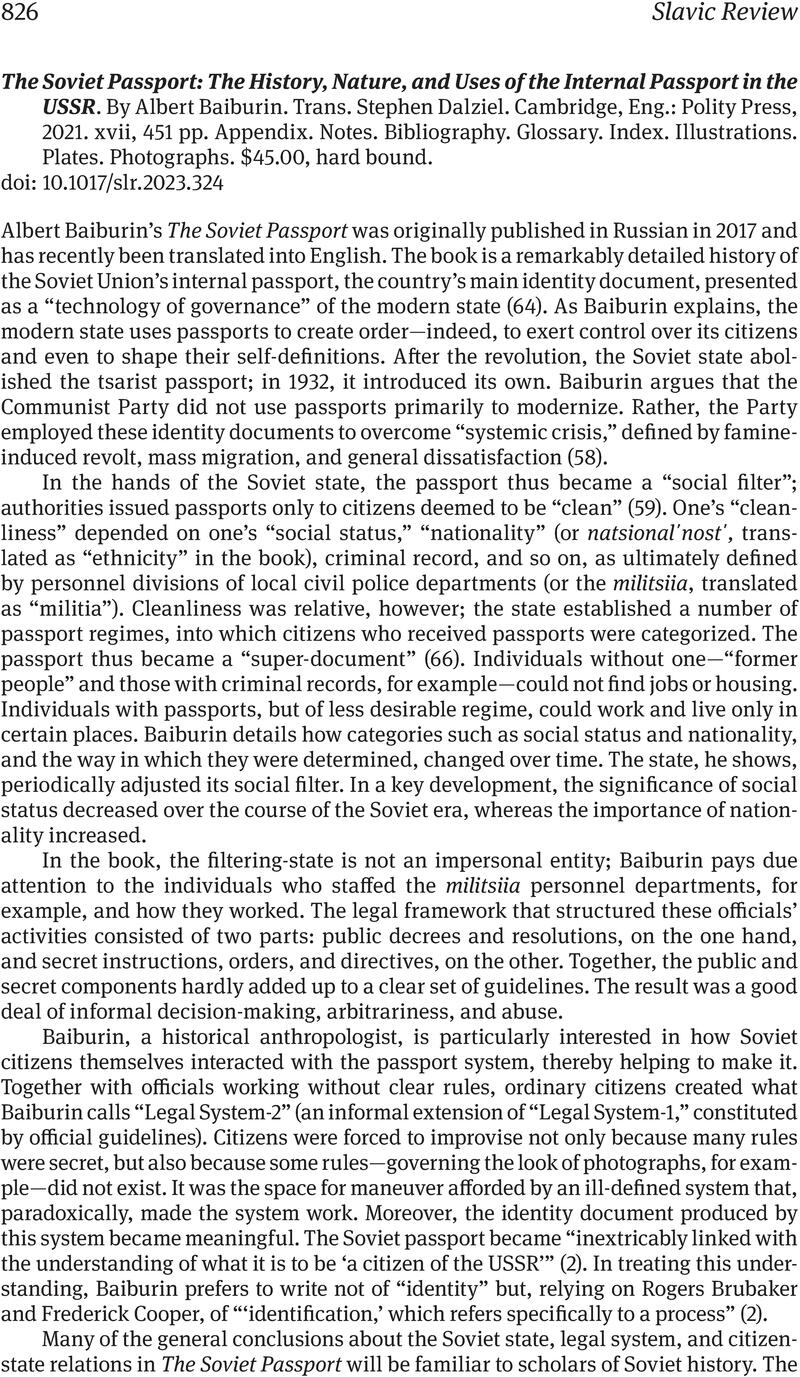No CrossRef data available.
Article contents
The Soviet Passport: The History, Nature, and Uses of the Internal Passport in the USSR. By Albert Baiburin. Trans. Stephen Dalziel. Cambridge, Eng.: Polity Press, 2021. xvii, 451 pp. Appendix. Notes. Bibliography. Glossary. Index. Illustrations. Plates. Photographs. $45.00, hard bound.
Review products
The Soviet Passport: The History, Nature, and Uses of the Internal Passport in the USSR. By Albert Baiburin. Trans. Stephen Dalziel. Cambridge, Eng.: Polity Press, 2021. xvii, 451 pp. Appendix. Notes. Bibliography. Glossary. Index. Illustrations. Plates. Photographs. $45.00, hard bound.
Published online by Cambridge University Press: 26 January 2024
Abstract
An abstract is not available for this content so a preview has been provided. Please use the Get access link above for information on how to access this content.

Information
- Type
- Book Review
- Information
- Copyright
- Copyright © The Author(s), 2024. Published by Cambridge University Press on behalf of Association for Slavic, East European, and Eurasian Studies

